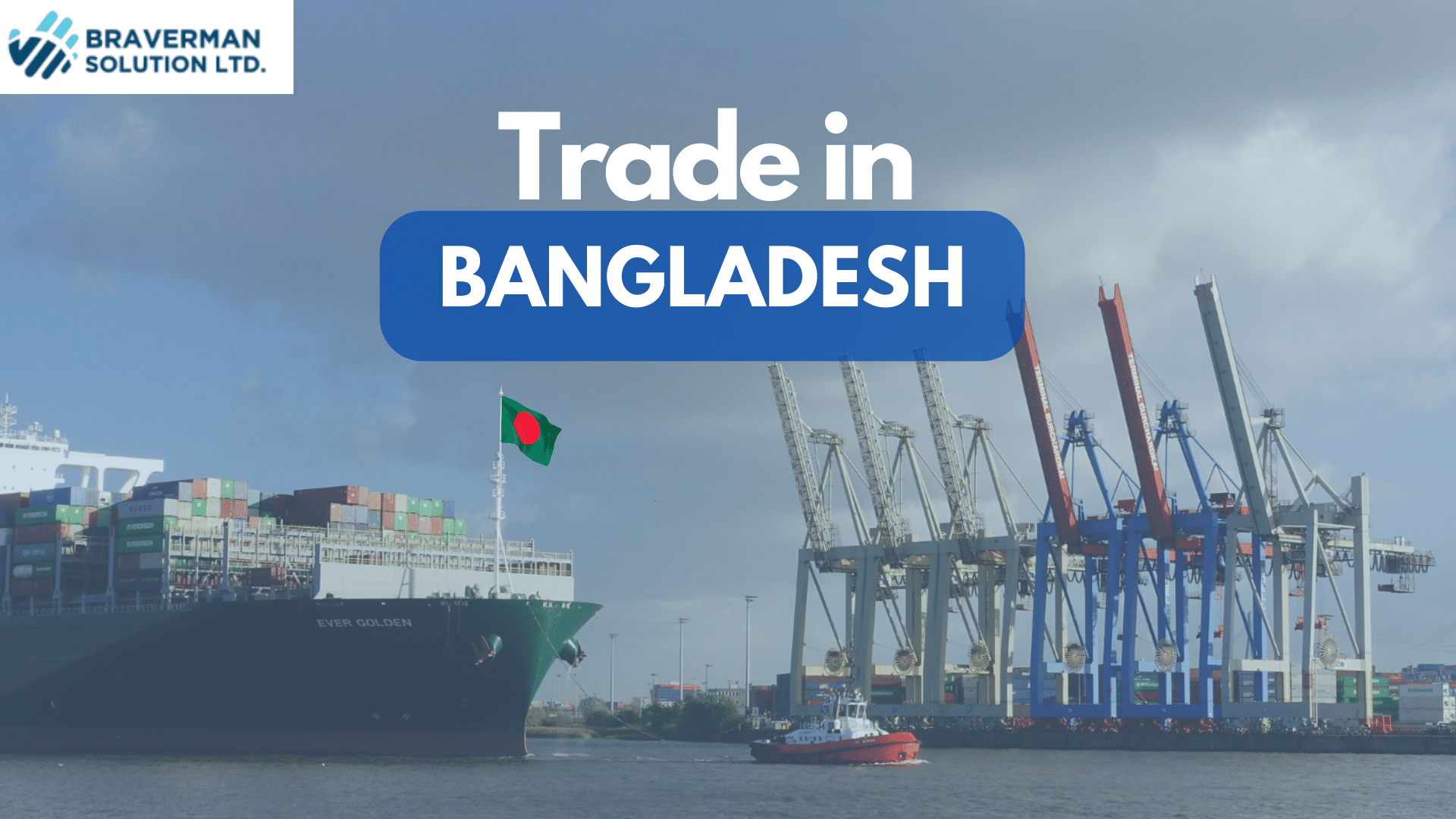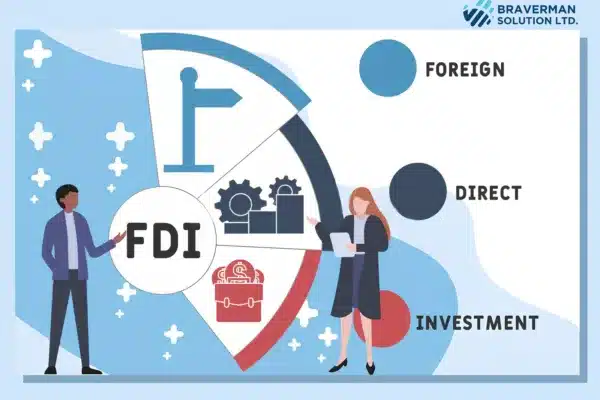Trade in Bangladesh 2024: Navigating the Business Landscape
Bangladesh, over the past five decades, has emerged as a significant player on the global stage, with trade in Bangladesh contributing a remarkable 34% to the country’s GDP in 2022. This impressive economic growth is not only a testament to the importance of foreign trade in Bangladesh but also underscores the role of modern trade in Bangladesh in employment generation, poverty reduction, and the nation’s march towards achieving Upper-Middle Income status by 2031. The coexistence of a liberal democracy, coupled with a population that has lived in harmony for thousands of years, highlights the unique trade opportunities and challenges in doing business in Bangladesh.
As the landscape of trade in Bangladesh continues to evolve, understanding the key industries, potential trade barriers in Bangladesh such as import tariffs and export problems, and the government’s initiatives in facilitating trade becomes crucial.
Additionally, navigating the legal and regulatory requirements, including trade license costs in Bangladesh, poses areas for businesses to carefully tread. Here we unpack the intricacies of trading in BD, shedding light on the dynamic nature of international trade in Bangladesh, and offering insights into leveraging government support and overcoming the myriad of challenges present in the business landscape of Bangladesh.
Overview of Bangladesh’s Trading Environment
In examining the trading environment of Bangladesh, several key elements emerge that shape its current state and future prospects:

- Export Composition and Challenges:
- The Ready-Made Garment (RMG) sector is pivotal, contributing 81.8% to total export earnings in FY 2022, showcasing a heavy reliance on a single industry
- This dependency has led to eroding trade competitiveness, with a noted downward trend in trade performance
- The country faces a significant challenge with the survival rate of new exporters being lower than that in regions like South Asia and Europe
- Trade Barriers and Costs:
- High tariff escalation and protectionist policies have fostered an anti-export bias, making the trade regime one of the most protective
- Non-tariff barriers and inefficient border processes increase trade restrictiveness and costs, further eroding competitiveness.
- Labor Force and Geographic Advantages:
- Despite these challenges, Bangladesh boasts a trainable, hardworking, and low-cost labor force
- Its strategic geographical location offers convenient access to major international sea and air routes, enhancing its potential as a global trade hub
These factors collectively depict a trading environment with unique challenges and opportunities, necessitating strategic adjustments to harness its full potential.
Key Industries and Trading Opportunities
In exploring the vibrant trading landscape of Bangladesh, several key industries emerge as front runners, each offering unique opportunities:

- Textile and Garments: Dominating the export scene, the Ready-Made Garment (RMG) sector accounts for over 75% of total exports, positioning Bangladesh as the world’s second-largest apparel exporter. The sector’s growth is fueled by a combination of skilled labor and competitive costs, attracting leading garment retailers globally
- Electronics and IT: With Bangladesh being South Asia’s largest cell-phone market, the electronics sector, including semi-conductors and cell phone assembly, is on the rise. The IT sector, primarily focused on information processing, benefits from a rapidly growing, cost-effective workforce, highlighting the country’s potential as a tech hub
- Agro-based and Light Industries: The agro-based industry, supported by an abundant supply of raw materials and increased production of fruits and vegetables, alongside light industries driven by export-oriented production, show significant growth potential. These sectors cater to both domestic and international markets, propelled by an expanding middle class
These industries not only underscore the diversity and potential of Bangladesh’s economy but also highlight strategic areas for investment and development.
Challenges Facing Trading Businesses in Bangladesh
Navigating the complex landscape of trading in Bangladesh presents several hurdles for businesses striving for success. The challenges span across legal, financial, and operational domains, significantly impacting the ease of doing business.
- Legal and Regulatory Complexities:
- The journey begins with obtaining a Trade License and extends to company registration with the RJSC, alongside securing a Tax Identification Number (TIN) and VAT registration
- Trading entities must navigate laws such as the Contract Act (1872), the Stamp Act (1899), and the Bank Company Act (1991), which govern contracts, banking, and labor
- Compliance with the Bangladesh Labour Act 2006, covering employment terms and workers’ welfare, poses another layer of complexity
- Financial and Operational Challenges:
- Dependency on banks for transactions and financial services can lead to issues like loan defaults and discrepancies in banking documents
- The COVID-19 pandemic exacerbated these challenges, hitting small businesses hard and causing contract frustrations and losses .
- Bureaucratic red tape, corruption, and complex customs procedures further increase operational difficulties, causing delays and additional costs
- External Barriers and Constraints:
- Access to finance remains a critical challenge, limiting expansion capabilities and competitiveness in the global marketplace
- High tariffs and non-tariff barriers from other countries, alongside stringent import regulations and standards, restrict Bangladesh’s trading potential
- Infrastructure and logistical constraints, including inadequate transportation and communication systems, hinder efficient operations
Government Initiatives and Support for Trading Businesses
In addressing the support structure for trading businesses in Bangladesh, several government initiatives and platforms have been pivotal:
-
- World Bank Group and Bangladesh Trade Portal:
- The World Bank Group’s endorsement through the Trade Facilitation Support Program has been instrumental in the launch of the Bangladesh Trade Portal
- This portal simplifies the import and export processes, providing comprehensive information on trade regulations, procedures, fees, and penalties, significantly reducing the cost and complexity of trading operations
- It aligns Bangladesh with the WTO’s Bali Agreement on Trade Facilitation, promising a smoother trade process and bolstering international investments
- Export Promotion Bureau (EPB) Services:
- The EPB offers a plethora of services aimed at bolstering exports, from providing export statistics and market intelligence to organizing trade fairs like the Dhaka International Trade Fair
- It manages the Bangladesh Trade Portal, offering resources for exporters and operates the Bangabandhu Bangladesh-China Friendship Exhibition Center, a prime venue for trade exhibitions
- Additionally, the EPB acknowledges exporters’ achievements through awards like the CIP and National Export Trophy, fostering a competitive and innovative export sector
- Government Measures for Business Ease:
- Initiatives such as the establishment of economic zones and the ‘One-Stop Service’ by the Bangladesh Investment Development Authority (BIDA) have streamlined business operations.
- Amendments to the company act and the introduction of one-person companies, alongside substantial stimulus packages during the COVID-19 pandemic, showcase the government’s commitment to supporting businesses
- The reduction of the interest rate to a single digit and the provision of tax exemptions and subsidies are aimed at creating a favorable business environment to stimulate growth and attract investments
- World Bank Group and Bangladesh Trade Portal:
Legal and Regulatory Requirements
As Bangladesh strides towards graduation from its least developed country (LDC) status, the trading landscape faces pivotal shifts. Key legal and regulatory requirements emerge as critical factors for businesses aiming to thrive in this evolving environment.
Legal and Regulatory Framework:
- WTO Compliance: With the impending LDC graduation, Bangladesh must align with specific WTO rules previously overlooked, necessitating a strategic adaptation to a more competitive global trading arena.
- Company Establishment: Establishing a business involves navigating through stringent regulatory requirements. For foreign-owned entities, there’s no minimum capital requirement, allowing businesses to start with what they deem sufficient. However, establishing legal entities and transferring control to foreign shareholders involves prior approval from the Bangladesh Bank and detailed documentation submission to the RJSC
- Operational Compliance: Businesses must obtain various licenses and certificates, including Trade License, Environment Clearance, ERC, IRC, and more. Adherence to laws like the Contract Act (1872) and compliance with annual requirements such as board meetings and tax filings are mandatory for maintaining operational legitimacy
The Bangladesh Trade Portal (BTP) serves as an invaluable resource, offering updates on legal and regulatory changes, facilitating businesses in staying compliant and informed
Conclusion
Through this exploration, we’ve navigated the intricate landscape of trade in Bangladesh, delving into its dynamic trading environment, key industries fueling the economy, challenges hindering progress, and the pivotal role government initiatives play in facilitating business operations. The discussions underscored the criticality of overcoming barriers such as legal complexities, operational hurdles, and external constraints to leverage the ample opportunities present. This comprehensive analysis not only highlighted the importance of strategic adjustments and government support but also showcased the potential of Bangladesh’s trade sector in contributing significantly to the country’s march towards achieving Upper-Middle Income status by 2031.
As Bangladesh continues to make strides in enhancing its position on the global stage, it’s imperative for businesses, both local and international, to stay informed and compliant with the evolving trade regulations and to effectively navigate the challenges faced. The significance of adapting to these changes becomes paramount in harnessing the full potential of the trading landscape of Bangladesh. For those seeking further information or assistance in navigating the business landscape of Bangladesh, feel free to contact us. Together, leveraging the insights and strategies discussed, businesses can not only thrive but also contribute to the vibrant and promising future of trade in Bangladesh.





